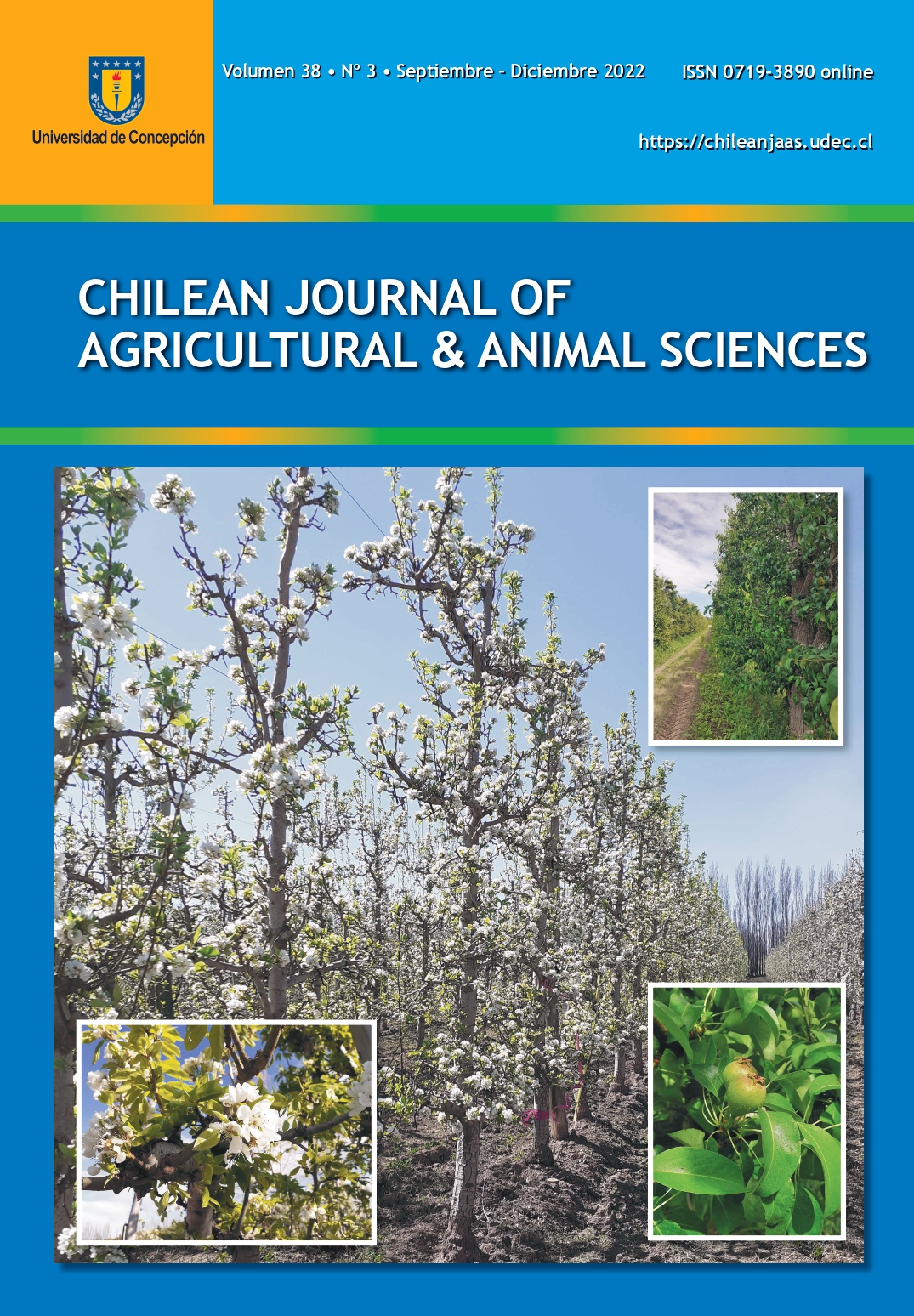SOYBEAN GENERATIONS UNDER GAMMA RAYS AND EFFECTS ON SEED QUALITY
DOI:
https://doi.org/10.29393/CHJAA38-27KSRD10027Keywords:
genetic variability, germination, Glycine max, ionizing radiation, radiosensitivityAbstract
Mutation induction is used to improve existing or generate new varieties. The objective of this study was to evaluate the effect of gamma radiation doses under successive generations of cultivation on seed quality of two soybean lines (VX04-6828 and VX04-5692). Different gamma-ray doses (60Co) were evaluated (0; 50; 150 and 250 Gray) in the M0 (first sowing) generation, and analyzed for water content, germination, vigor, abnormal seedlings, dead seeds, and hilum color. Then, sowing (M0) was carried out to obtain plants and seeds of the first production cycle (M1 generation), and then those of the subsequent cycle (M2 generation). The same analyses of M0 were performed for M2 and M3 generations, with the addition of germination rate and emergence speed index in the field. The data were submitted to analysis of variance in a factorial arrangement. The generations were compared using Tukey’s test, while doses were evaluated by regression analysis. Seeds of the two soybean lines showed significant interaction for the different generations and gamma-ray doses in all the variables analyzed, except for water content. The application of gamma rays in soybean seeds showed effects on successive generations of cultivation, with better physiological quality up to the dose of 150 Gy (Gray) and greater sensitivity to gamma radiation for the VX04-5692 line.
Downloads
Published
How to Cite
Issue
Section
Copyright (c) 2022 Danúbia Aparecida Costa Nobre, Caroline Salezzi Bonfá, Amilton Ferreira da Silva, Valter Arthur, Carlos Sigueyuki Sediyama

This work is licensed under a Creative Commons Attribution 4.0 International License.







